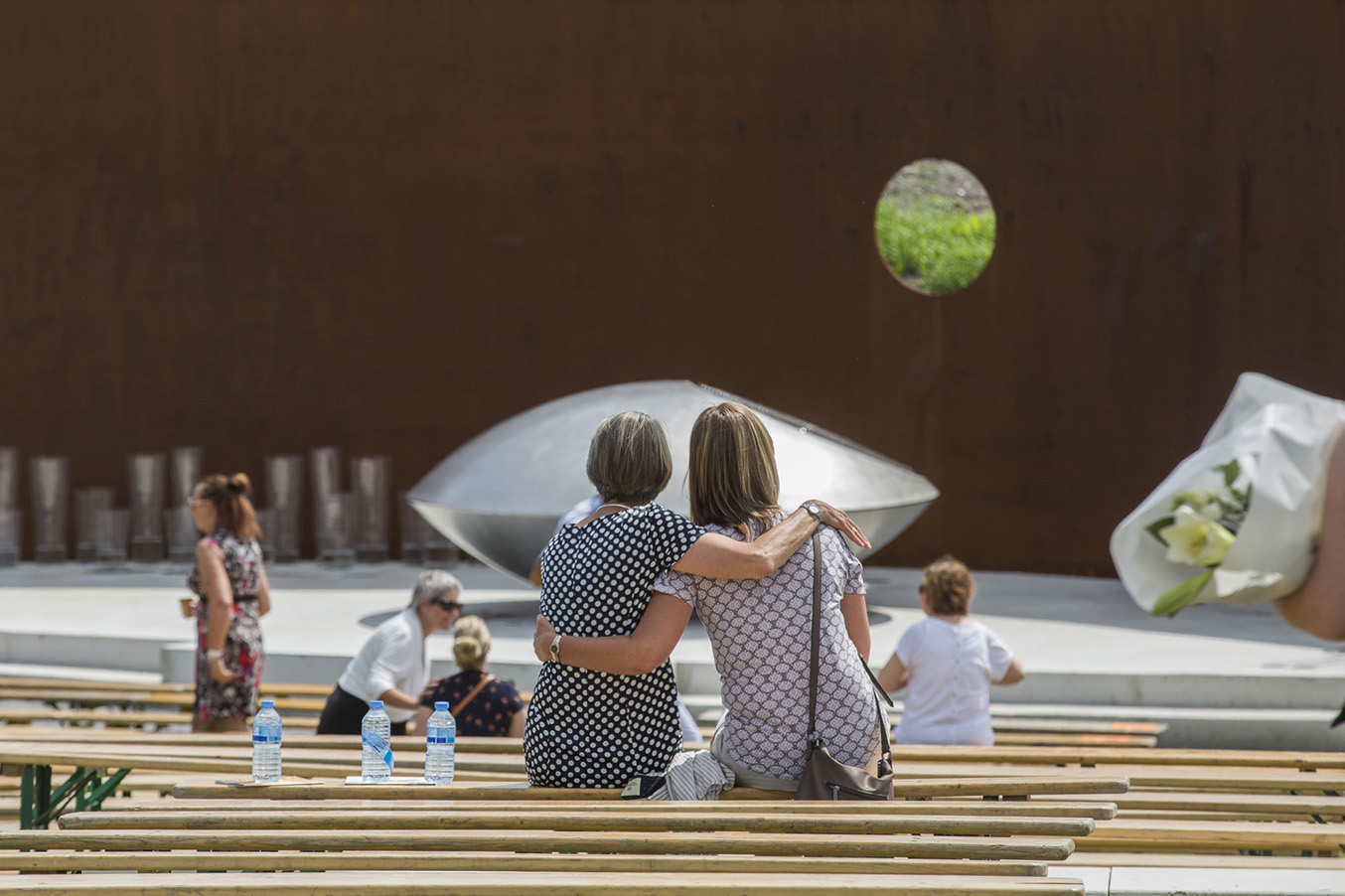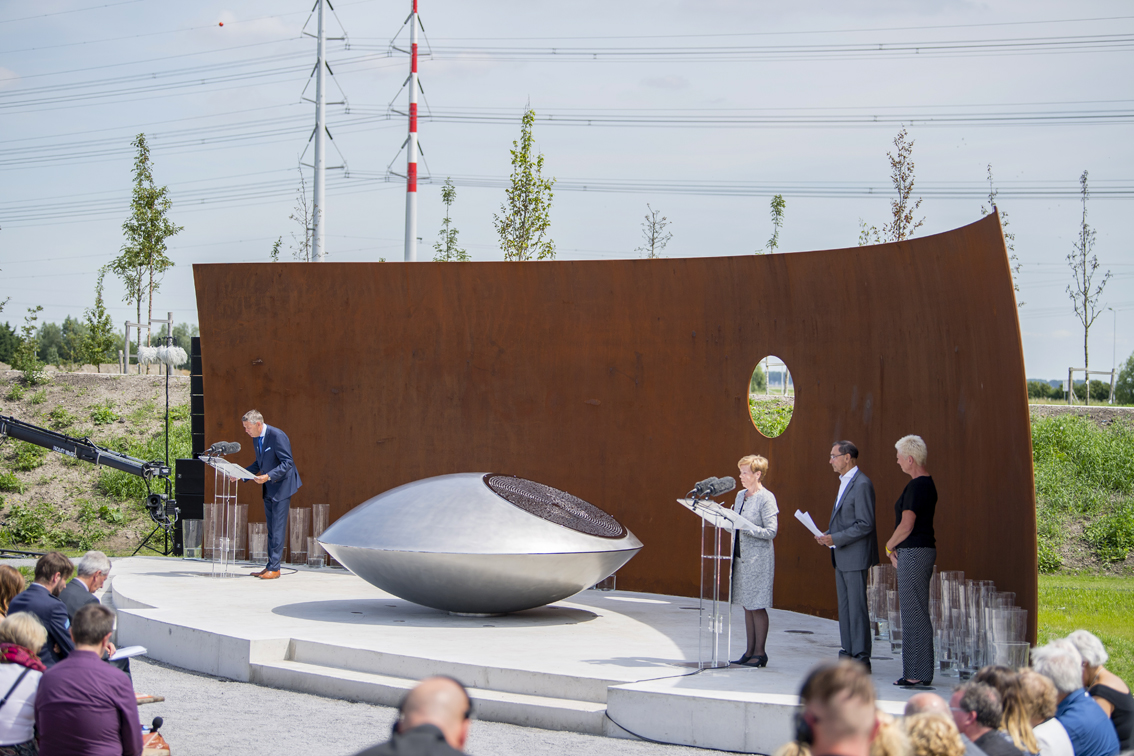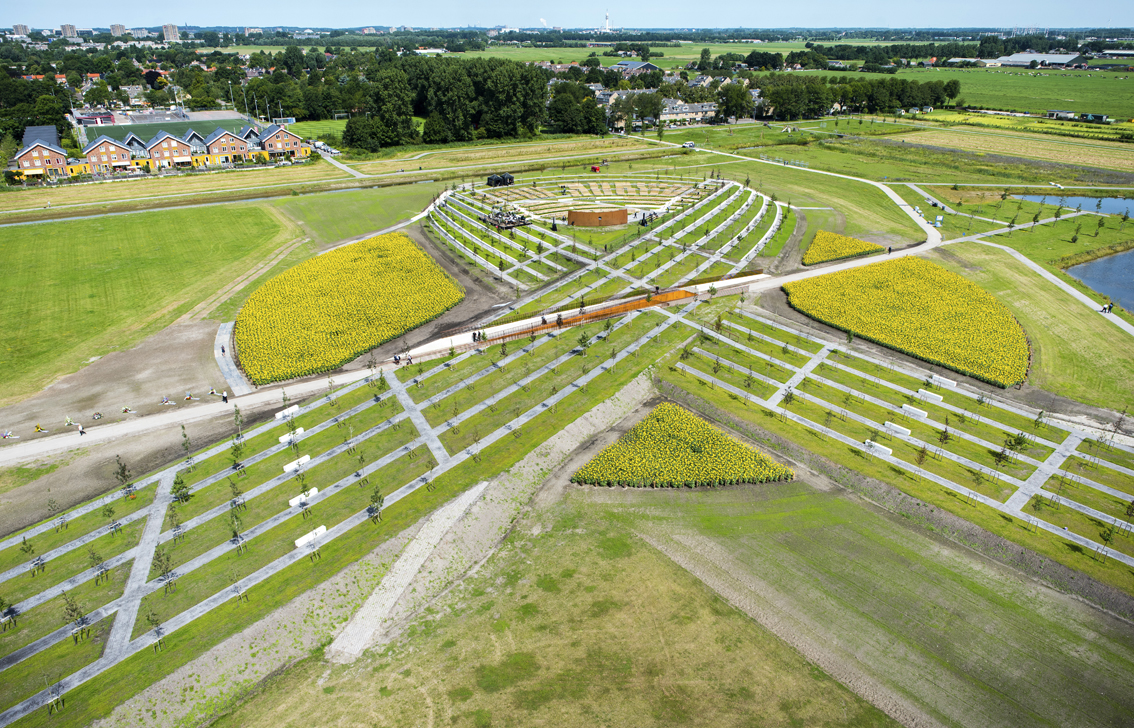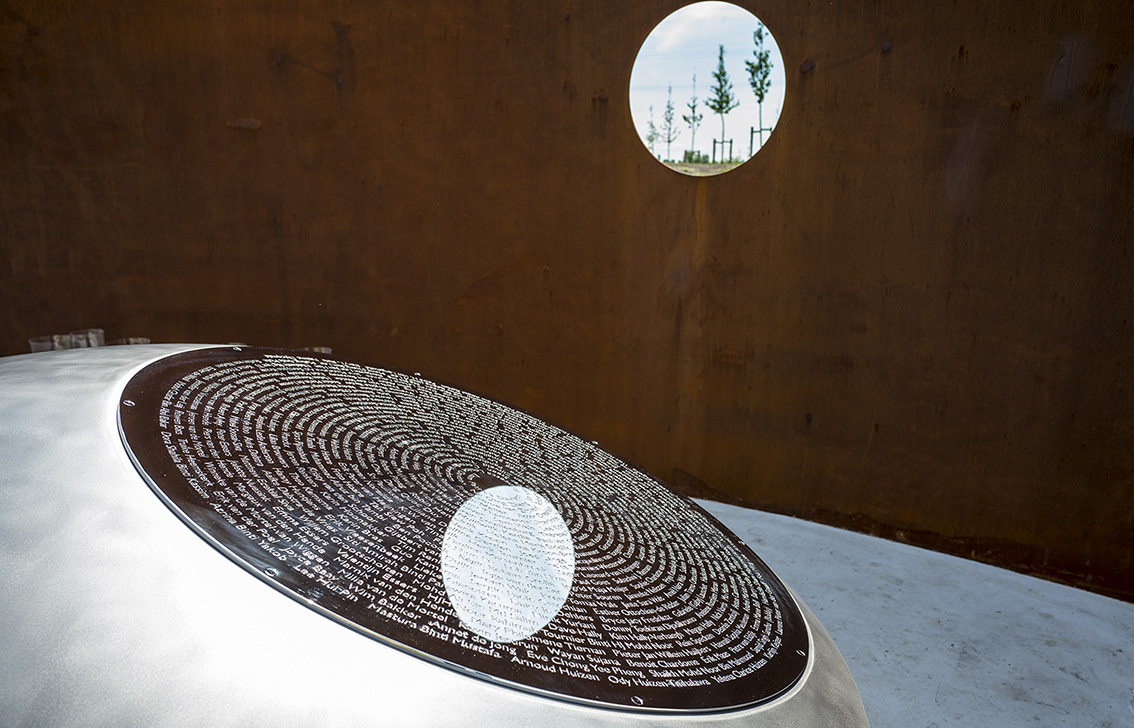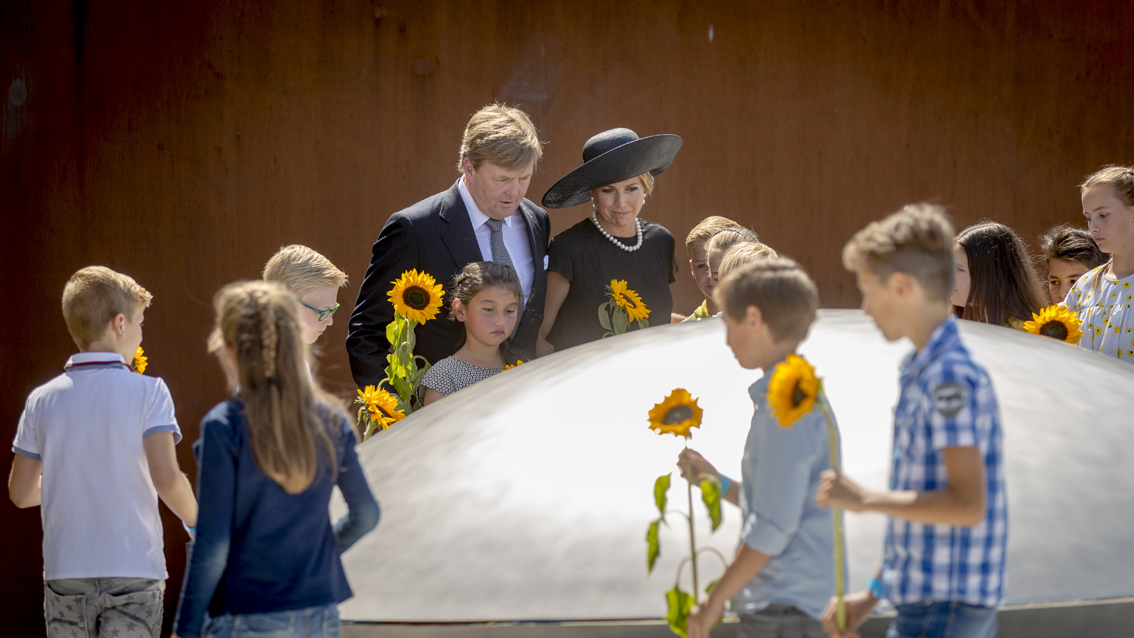National Monument MH17
Malaysia Airlines Flight MH17 was a scheduled international passenger flight from Amsterdam to Kuala Lumpur that was shot down on 17 July 2014, killing all 283 passengers and 15 crew on board.
An interview with Francisca Muller (De Stentor)
“My sculptures are intended to exude something positive, to make people happy. But how can you put a positive spin on something so terrible? I spoke with relatives, I started reading about the disaster, and I heard all the background stories. I realized what the monument was for. That made it difficult for me. It felt like a huge responsibility. It’s a monument that should never have had to be built. At one point I said to my team: “I think I better hand back the commission.” I was at a dead end.’
‘That night I sat here in my workshop, and all of a sudden I knew what to do. I always work with stainless steel, which has a high bling-bling factor. I realized that for this monument I had to use ordinary steel. It has a totally different look and feel. It gets rusty, it’s not indestructible, it’s subject to change. It’s an appropriate material to use to represent sadness. I eventually chose to use a curved steel wall that is four metres high and sixteen metres wide. The structure standing in front of the wall is a stainless steel sculpture from which I’ve removed a part. This creates a deeper lying surface on which the names of all the Dutch victims have been engraved. This represents the loss The sculpture has been high-gloss polished, so the sunlight is reflected onto the rear panel, representing the memory that enlightens sadness. When you fly over the monument, you see an eye looking up to the heavens.’
‘I was in Shanghai when Flight MH17 was shot down. It affected me deeply, perhaps because I travel a lot by plane myself. I knew right away I had to do something with it. It wasn’t that I already had a design in my mind. It was more like a feeling. This was so big, so terribly tragic. When I was back in the Netherlands, I met the chairman of the MH17 Foundation, who had lost his son. We had several conversations, and eventually we agreed that I would submit a design.’
‘Where do you begin? Usually I get assignments. This was so different. I went to look at the national monument in Dam Square, and the Holocaust Memorial in Berlin, which was designed by Daniel Libeskind. Even if you know nothing of the Holocaust, if you walk amidst those heavy blocks, you feel the pressure. That is the power of abstraction. The Vietnam Memorial in Washington was also a source of inspiration. All those granite slabs with tens of thousands of names engraved on them made a tremendous impression on me.’
‘I made a scale model, which I presented to a room full of relatives of the victims. It felt like I went to a funeral. But I knew I had a good design. I talked with many people that day, and listened to their personal stories. Two weeks later I was informed that my design had been chosen by the relatives. No commissions involved, only people who grieve for their lost loved ones. Honestly, it would also have been fine by me if the job had gone to someone else. What matters is that people have a place where they can access their grief. Naturally, I feel honoured that they selected my design.’
‘I know very well that a monument won’t change anything. As a matter of fact I asked the relatives whether it would take away some of their pain. “”No,” they said, ”but it’s good we will have a place where we can go to.” Probably they will only find some closure once they know what really happened.’
‘That disaster is never far from my mind. Yesterday evening I went to a restaurant with a good friend of mine to have dinner. His son had lost his best friend in the MH17 disaster. The realization that it can happen to us all makes us vulnerable. Violence is not far away, it happens here and it happens today.’
